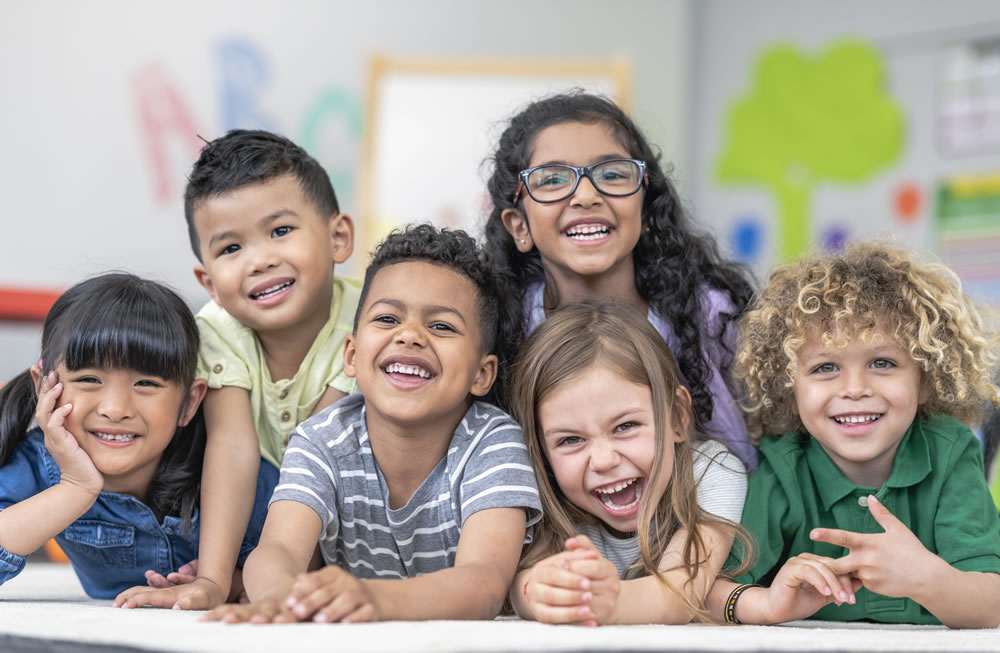The Montessori method is unique in its approach to child learning and development as it departs from the traditional rote learning. Many parents are interested in Montessori, particularly for early education. However, not all learning centers that engage in it fully understand the principles and purpose of Montessori; thus not truly giving children a true Montessori experience. To understand the methodology, and apply it correctly, let us go back to basics. What is the main purpose of Montessori?
The main purpose of the Montessori method is to help the child develop to their full potential by respecting their innate interests and capacity to learn by doing. This is done by providing a stimulating environment prepared for optimal learning, with a teacher who observes and guides the child, rather than instructs.
As a result of this approach, the Montessori Method is effective in encouraging children to enjoy the process of discovery and learning, thus developing lifelong learners. But how did it all begin for the Montessori Method?

The Beginnings of the Montessori Method
The Montessori method traces its beginnings to the San Lorenzo slum quarters in Rome, Italy, where in 1907, Dr. Maria Montessori opened Casa dei Bambini (The Children’s House). Dr. Montessori was an Italian physician who had a strong interest in human development, particularly child development, and worked in clinics and schools for children with mental, physical, and emotional challenges.
Casa dei Bambini came about when Dr. Montessori was tasked to attend to a group of previously unschooled children in the slum district while their parents worked. The children, aged between 2 and 6, were illiterate and ran amuck in the quarters unsupervised. Developers rehabilitating the area wanted the children contained (jailed) in a room so they would not destroy property. Dr. Montessori took up the challenge and endeavored to create a school within this confinement with an environment that would nurture the children and help them learn.
In the Children’s House, Dr. Montessori observed that the children liked to learn by doing things themselves – solving puzzles, cleaning their environment, preparing their meals, and other activities that they could participate in. Dr. Montessori concluded that through these hands-on activities that children were interested in, they were actually teaching themselves effortlessly.
“…They were left alone and little by little the children began to work with concentration and the transformation they underwent was noticeable. From timid and wild as they were before, the children became sociable and communicative. They showed a different relationship with each other, of which I have written in my books. Their personalities grew and, strange though it may seem, they showed extraordinary understanding, activity, vivacity and confidence. They were happy and joyous.”-Maria Montessori’s speech on 35th anniversary of Casa dei Bambini
The Casa dei Bambini project was a significant moment in Dr. Montessori’s career as she pivoted from her future as a physician, to one of an educator, upon seeing the difference her observations and methods made on the lives of the children. She believed that this experience with the children was showing her a new way forward in child development, one of following the lead of the child, and this was the beginning of the Montessori method.
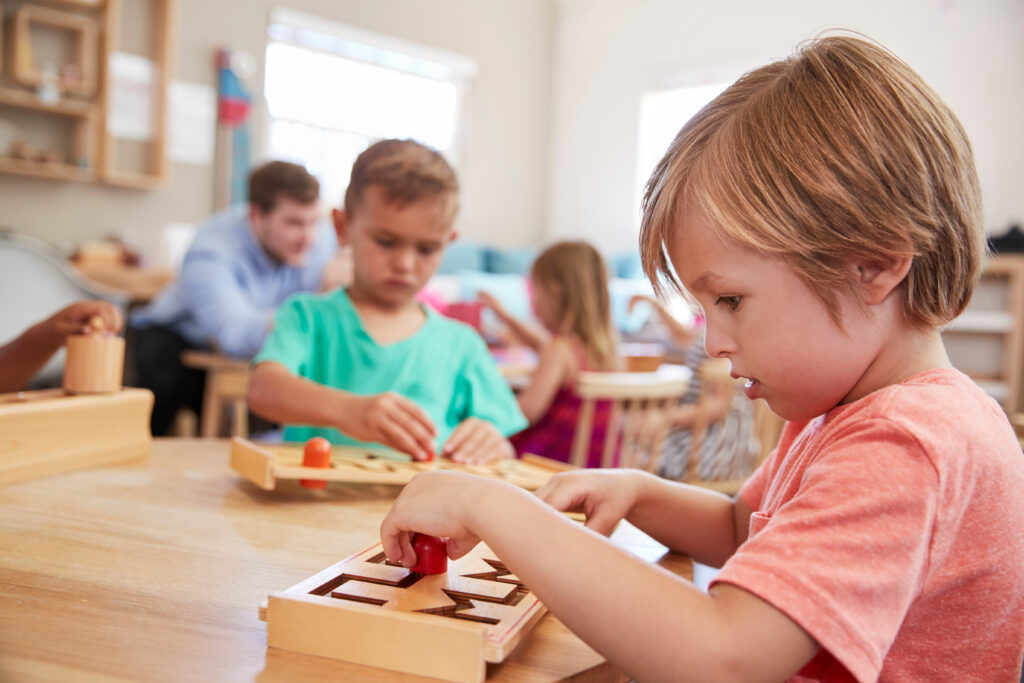
The Main Purpose of Montessori
As stated earlier, the main purpose of the Montessori method is to help the child develop to their full potential. Dr. Montessori believed that the child is their own person, capable of determining what they need to learn. The Montessori approach “follows the child” by respecting their innate interests and capacity to learn by doing.
While most education systems are developed from the adult’s perspective, with milestones set according to adult schedules and expectations, Montessori believes that teachers and parents should pay attention to the child as they are now, not what adults wish for them to be in the future. This means getting to know the child, observing what their interests are at the moment, and supporting them as they learn to navigate their current world.
Educators and parents can give children this freedom to learn and develop by preparing a stimulating environment where they can explore and decide which activities they would like to work on.
“We must, therefore, quit our roles as jailers and instead take care to prepare an environment in which we do as little as possible to exhaust the child with our surveillance and instruction. However much the environment corresponds to the needs of the child, by so much will our roles as teachers be limited. We must, however, keep one idea clearly in mind – to give a child liberty is not to abandon him to himself or to neglect him…we must support his development with prudent and affectionate care. Furthermore, even in the preparation of the child’s environment we are faced with a serious task, for in a sense we must create a new world – the world of childhood.“–Maria Montessori, The Child in the Family
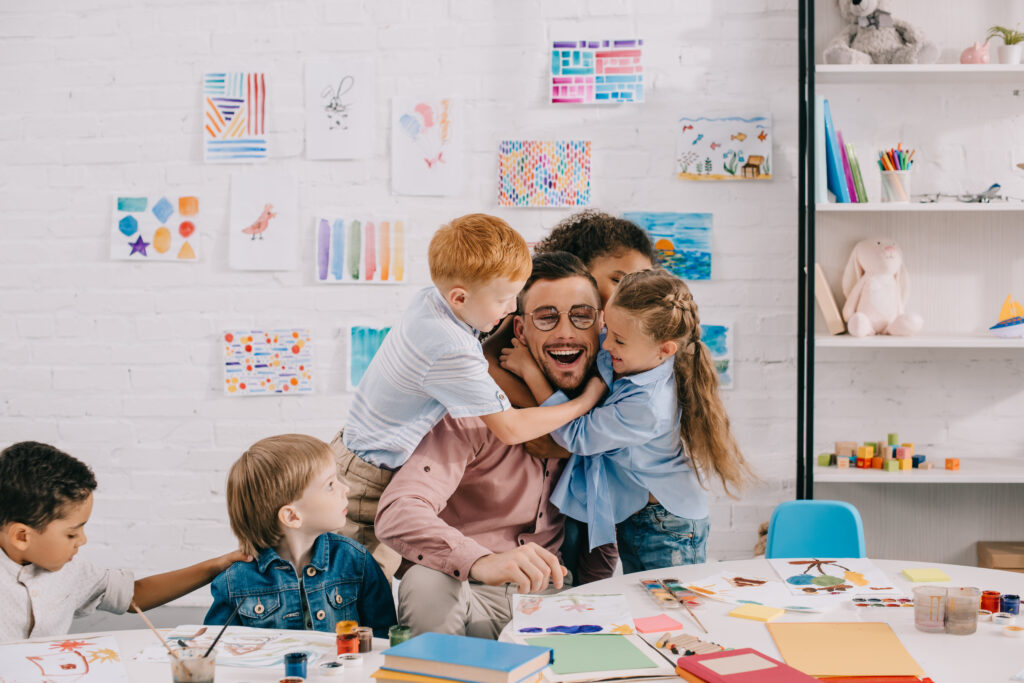
Principles of Montessori and how they support the main purpose
The Montessori method has five main principles that govern child development and education. These 5 principles support the purpose of Montessori learning.
Respect for the Child
The first principle of Montessori education is Respect for the Child. In the early twentieth century, when the Montessori method began, children did not have the same esteem and respect they enjoy today. Children were treated more as property of the adults who bore them, to be instructed, scolded, admonished – in preparation for adulthood.
Montessori believed the child should be respected as their own person who has distinct character and personality from adults. In this sense, respect for the child requires that children be given the freedom to express themselves and explore what interests them within a safe environment.
This principle supports the main purpose of aiding the child to reach their full potential by being attuned to their needs and interests, in a sense, kindling their spirit instead of extinguishing it. This respect will instill confidence in the child which will help them grow to their full potential.
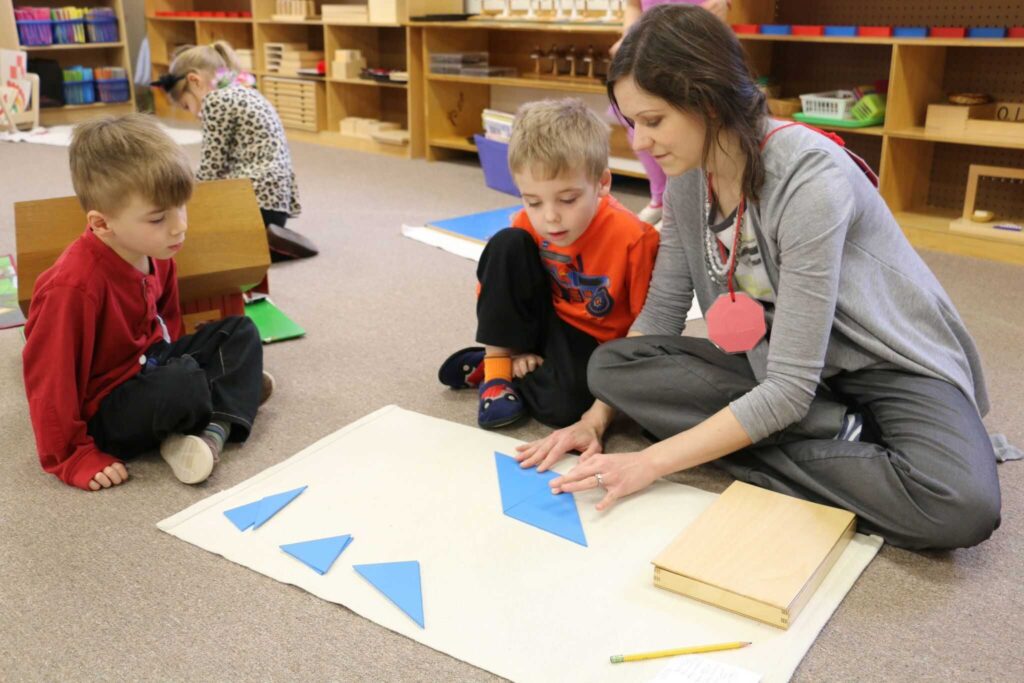
The Absorbent Mind
Dr. Montessori believed that in the absorbent mind of the child that the child is constantly learning from their surroundings. Particularly from infancy to the age of six, everything the child encounters is new to them and thus they are absorbing new information and learning from it.
This principle supports the main purpose by alerting adults that the child needs the proper stimulation and experiences to learn and absorb as much as possible.
“The only thing the absorbent mind needs is the life of the individual; give him life and an environment and he will absorb all that is in it. But, of course, if you keep a camera in a drawer you will never get any pictures. It is necessary for this absorbent mind to go out into the environment. ”-Maria Montessori, The 1946 London Lectures, p. 65
Sensitive Periods
Montessori education promulgates that there are specific times in a child’s development when they are more attuned to learning a particular set of skills. These are the “sensitive periods”. During this time, children have a natural inclination, attention, and interest where they are committed to learning more about a concept or idea, and exposing them to this would result in better absorption of knowledge.
This principle supports Montessori’s main purpose by advising teachers and parents to be attuned to the child’s interests at a particular time in their development so that they can learn more effortlessly.
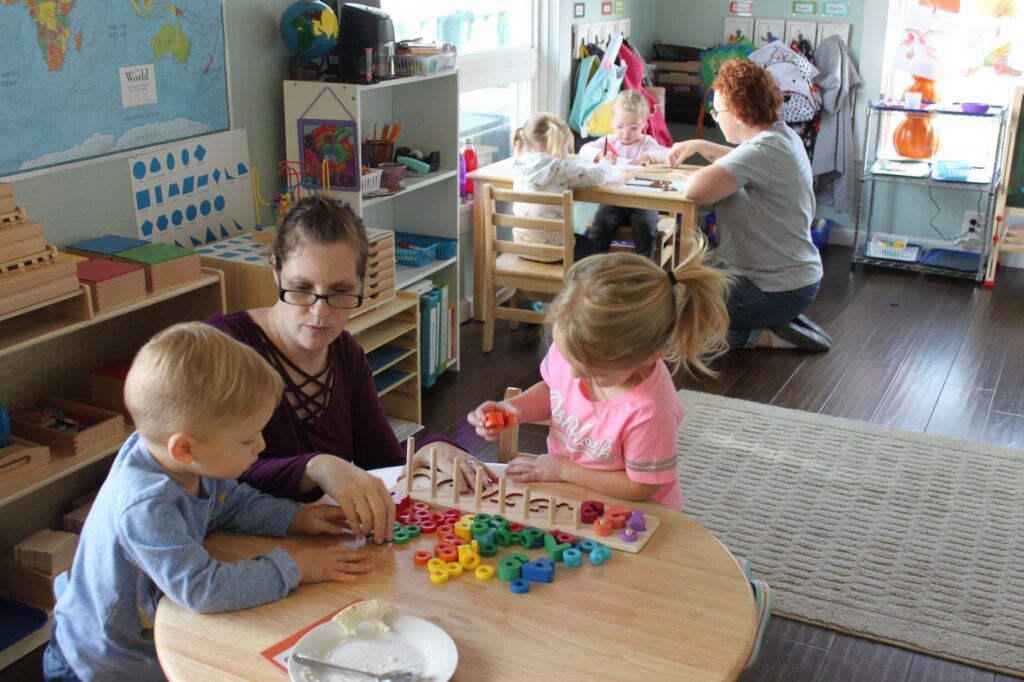
The Prepared Environment
The Montessori prepared environment is an area that is set up for the child where they can do their desired activities autonomously. It is prepared in anticipation of what a child would need to learn and explore in a safe space. This would include having items at their level for easy access, a range of materials to choose from, and items presented in a neat and orderly manner.
“When we speak of “environment” we include the sum total of objects which a child can freely choose and use as he pleases, that is to say, according to his needs and tendencies. A teacher simply assists him at the beginning to get his bearings among so many different things and teaches him the precise use of each of them, that is to say, she introduces him to the ordered and active life of the environment. But then she leaves him free in the choice and execution of his work.”Maria Montessori, The Discovery of the Child, p. 65
This principle supports Montessori’s main purpose by giving the child the freedom to decide the work that they would like to do based on their current needs and interests. Materials in a Montessori prepared environment are all educational and have been demonstrated by the teacher when first introduced, thus making it easy for the child to handle and explore them.
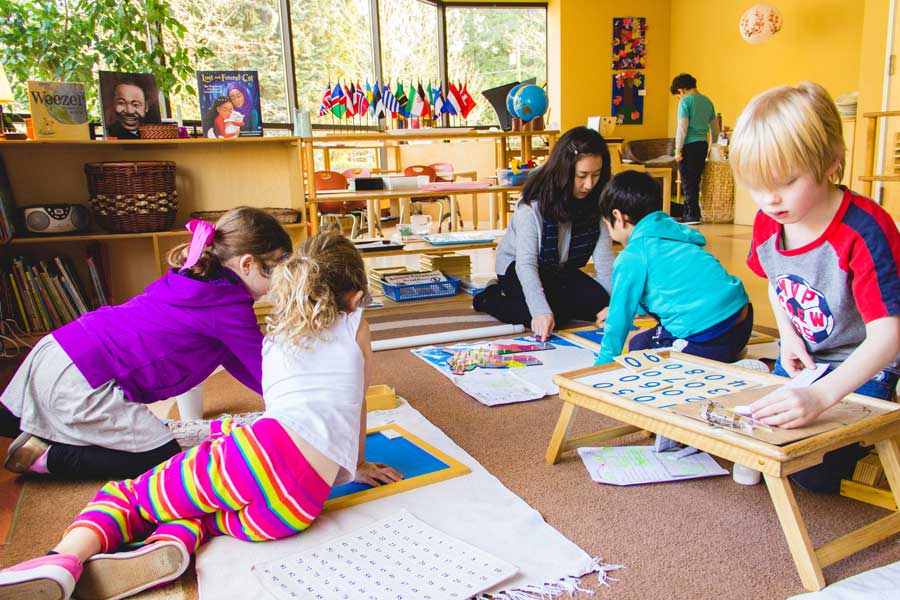
Auto education
Auto education, otherwise known as self-education, is the Montessori principle that reinforces the belief that children are able to learn by themselves if given the right environment and stimulus.
This principle supports the main Montessori purpose by respecting the child as their own person, capable of directing their learning. Auto education is the totality of the Montessori principles in action. It is the recognition of the child’s absorbent mind and sensitive periods, plus the prepared environment which allows the child to learn independently.
Education demands, then, only this: the utilization of the inner powers of the child for his own instruction. Is it possible? It is not only possible, it is necessary. Attention must be stimulated gradually in order to develop the powers of concentration. One must begin with objects that appeal to the senses, that are easily recognizable and that will interest the children: cylinders of various sizes and of colors arranged according to the spectrum, various distinct sounds, rough surfaces that are recognizable by touch. Later we introduce the alphabet, writing, reading, grammar, and design, more complex operations in mathematics, history and science. This is how the child’s knowledge is built.-Maria Montessori, The Child in the Family
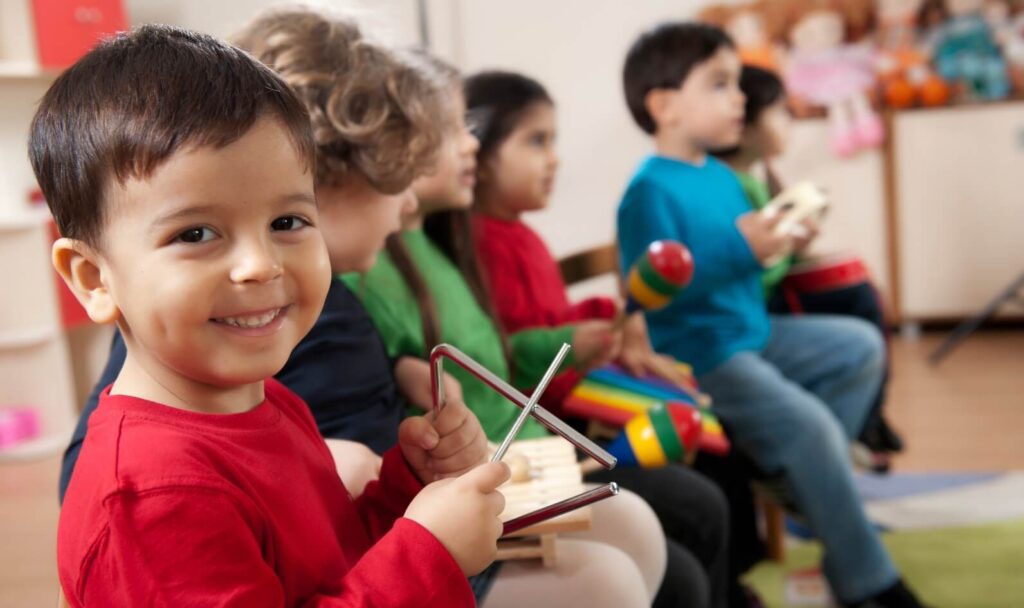
Applications in Modern life
Because the Montessori method was created over a century ago, many of Dr. Montessori’s ideas about child education and development have now become mainstream. Dr. Montessori was ahead of her time in seeing the child as a separate individual.
Today’s children have the benefit of being seen and heard, with expression of their opinions and feelings being encouraged. Respect for the child has gone from a groundbreaking concept to a moral and legal obligation.
Respect for the Child
Practically, respect for the child is shown by allowing them to make choices about the work they would like to do. It also means recognizing that they would know when they are ready and capable to try things, and when they are tired or sleepy. It is the same respect we give adults that Montessori is expecting that we give children.
The Absorbent Mind
Because the child’s mind absorbs anything and everything, it would be good to expose the child to varied and interesting experiences that are related to all their senses so that they can learn more. Also, helping the child absorb the information not by telling them about it but by asking them what they think about it.
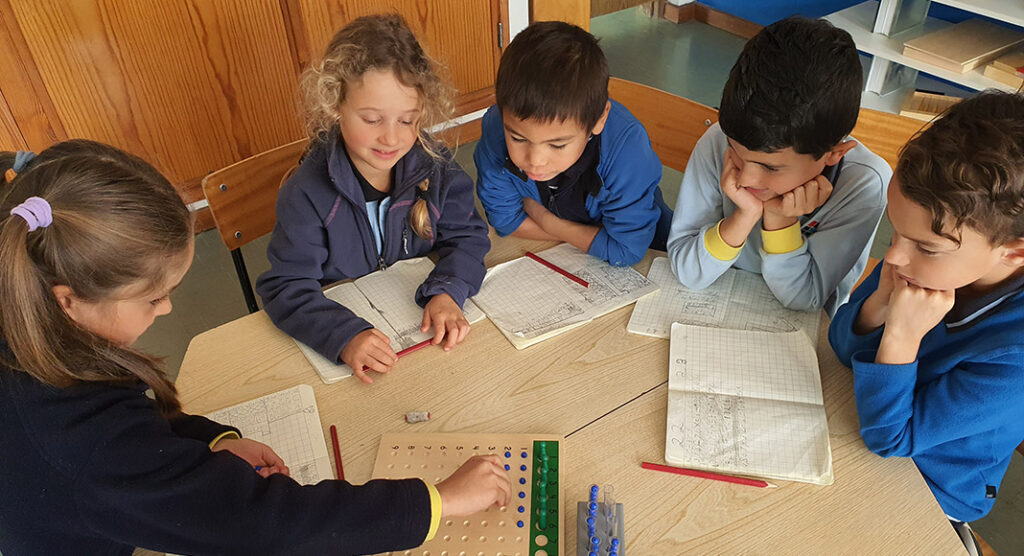
Sensitive periods
Knowing the eleven sensitive periods and their onset can help the child learn better. The sensitive periods include:
- Movement (birth to one year old) – teaching movement and gross motor skills from
- Small Objects (one to four years old) – allowing children to explore their interest of small objects and details
- Order (two to four years old) – establishing routines, teaching rules and proper place for things
- Grace and Courtesy (two to six years old) – teaching polite behavior
- Refinement of the Senses (two to six years old) – exposing children to sensory experiences so they can learn more about each sense (sight, hearing, touch, taste, smell)
- Writing (three to four years old) – teaching children about letters and number shapes and how to write
- Reading (three to five years old) – teaching children to sound out letters and form simple words (Montessori sometimes combines senses, reading, and writing by teaching children to sound out the letters while tracing a tactile cut-out of the letter so that they learn both form and sound at the same time, and refine their sense of touch)
- Expressive Language (birth to six years old) – teaching words to communication, with emphasis on comprehension
- Spatial Relationships (four to six years old) – teaching children about spaces and places, including direction
- Music (two to six years old) – teaching children about pitch, rhythm, and melody through song and rhyme
- Mathematics (two to six years old) – teaching children about quantity and mathematical operations (addition and subtraction) through the use of concrete materials such as counting beads
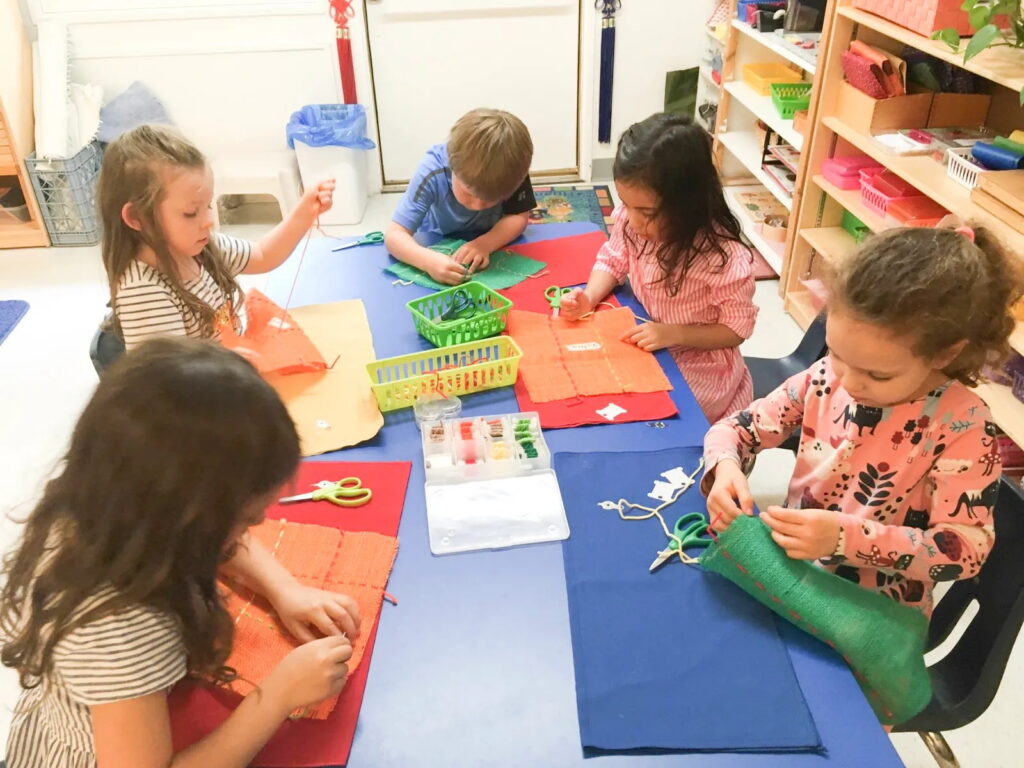
The Prepared Environment
To mimic the Montessori school environment, have a small area dedicated to the child as a workspace. Have shelves that are easily accessible by the child. Populated this with items that interest the child. This can be sort of a play area with educational toys and books where the child can explore and let their mind wander.
The idea of a prepared environment is portable. In experience, prepare for the child’s needs by anticipating what he would enjoy on a day out. For example, during a picnic, bring a ball, a kite, and other items of interest and allow them to choose among them. Pack food items that they would enjoy. The idea is to create a safe and stimulating environment wherever they are so that they can learn by doing things independently.
Auto Education
Hand in hand with the prepared environment, allowing the child to be and do their work in their own space supports the concept of self education. This is done by not interrupting the child’s work or play when they are focused on it. It also means not praising or punishing the child but letting them come to conclusions about what they are learning by themselves.
The Prepared Environment
To mimic the Montessori school environment, have a small area dedicated to the child as a workspace. Have shelves that are easily accessible by the child. Populated this with items that interest the child. This can be sort of a play area with educational toys and books where the child can explore and let their mind wander.
The idea of a prepared environment is portable. In experience, prepare for the child’s needs by anticipating what he would enjoy on a day out. For example, during a picnic, bring a ball, a kite, and other items of interest and allow them to choose among them. Pack food items that they would enjoy. The idea is to create a safe and stimulating environment wherever they are so that they can learn by doing things independently.
Auto Education
Hand in hand with the prepared environment, allowing the child to be and do their work in their own space supports the concept of self education. This is done by not interrupting the child’s work or play when they are focused on it. It also means not praising or punishing the child but letting them come to conclusions about what they are learning by themselves.

